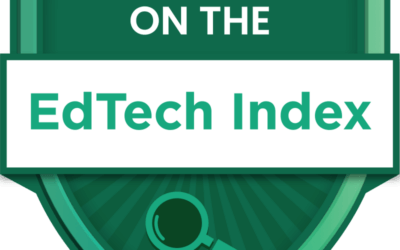Responsible Adoption of Generative AI in Higher Education
Introduction to Responsible Adoption of Generative AI in Higher Education
Generative AI (GenAI) is revolutionizing various sectors, and higher education is no exception. However, the adoption of GenAI in higher education needs to be approached with caution to ensure that it aligns with the core values and goals of educational institutions. This blog post explores a “points to consider” approach for the responsible adoption of generative AI in higher education, based on insights from a comprehensive study at the University of Pittsburgh.
Why the Responsible Adoption of Generative AI in Higher Education is Crucial
The integration of generative AI in higher education offers numerous benefits, including enhancing research capabilities, improving administrative efficiency, and enriching the learning experience for students. However, without a responsible adoption strategy, these benefits can be overshadowed by risks such as bias, inaccuracy, and inequity. Therefore, it’s essential to adopt GenAI in a way that upholds academic freedom, promotes equity, and ensures the integrity of educational and research activities.
Key Considerations for the Responsible Adoption of Generative AI in Higher Education
Advancement of Science
One of the primary reasons for adopting generative AI in higher education is its potential to advance scientific research. GenAI can enhance the accuracy, replicability, and creativity of research activities. However, it is crucial to ensure that the use of GenAI aligns with the core values of intellectual honesty and integrity.
Promotion of Educational Goals
Generative AI can significantly contribute to the educational goals of higher education institutions by providing personalized learning experiences, aiding in the development of critical reasoning skills, and supporting multilingual and neurodiverse students. However, educators must carefully consider when and how to incorporate GenAI into the curriculum to avoid supplanting essential learning processes.
Economic and Competitive Pressures
Higher education institutions face economic constraints and competitive pressures. Adopting GenAI can help institutions remain competitive by preparing students for the future workforce and enhancing institutional efficiency. However, this must be balanced with the need to address potential overburdening of faculty and ensure equitable access to GenAI resources.
Potential Uses of Generative AI in Higher Education
Teaching and Learning
- Course Design and Material Creation: Instructors can use GenAI tools such as Maya AI CoPilot to create assignments, generate supplemental teaching materials, and personalize learning experiences for students.
- Rethinking Assignments: To mitigate GenAI-assisted cheating, educators can design assignments that require active engagement, such as in-class presentations and collaborative mind-mapping exercises.
Administrative and Service Activities
Generative AI can streamline administrative tasks such as drafting communications, generating reports, and reviewing procurement bids. However, the use of GenAI in sensitive areas like hiring and admissions requires careful consideration and heightened scrutiny.
Research
Researchers can use GenAI to search for, summarize, and draft research documents. GenAI can also be a valuable tool in creative disciplines like music, visual arts, and literature. However, its use must be governed by clear policies to ensure the integrity of research processes.
Risks and Benefits of Generative AI in Higher Education
Benefits
- Advancing Scientific Progress: GenAI can accelerate research and lead to new scientific discoveries.
- Improving Teaching and Learning Outcomes: Personalized learning experiences can cater to diverse student needs.
- Reducing Faculty and Staff Burden: Automating routine tasks can free up time for more critical educational activities.
- Promoting Equity: GenAI can provide support for students with disabilities and those from underrepresented backgrounds.
Concerns
- Inaccuracy and Bias: Ensuring the accuracy and fairness of GenAI outputs is essential.
- Loss of Skills: Over-reliance on GenAI can hinder the development of essential skills.
- Legal and Reputational Risks: Institutions must navigate the complex landscape of intellectual property and data privacy.
- Environmental Impact: The energy consumption of GenAI models is a growing concern.
Six Normative Points for the Responsible Adoption of Generative AI in Higher Education
- Respect Academic Freedom: Faculty should have the autonomy to decide how to use GenAI in their teaching and research.
- Ensure Consistency with Academic and Scientific Values: GenAI use should align with values like accuracy, replicability, and intellectual honesty.
- Implement Best Practices for Risk Mitigation: Institutions should adopt policies that minimize risks associated with GenAI.
- Promote Equity: Ensure equitable access to GenAI resources and address potential inequities in its use.
- Adapt Existing Policies to Include GenAI: Revise current policies to address the specific challenges posed by GenAI.
- Educate Faculty and Students about GenAI: Provide training and resources to ensure responsible and informed use of GenAI.
Conclusion: Embracing the Responsible Adoption of Generative AI in Higher Education
The responsible adoption of generative AI in higher education is not just about embracing new technologies but also about ensuring that their use aligns with the fundamental values and goals of educational institutions. By considering the points outlined in this post, higher education institutions can harness the potential of GenAI while mitigating its risks, ultimately enriching the educational experience for all stakeholders.
For more information on the responsible adoption of generative AI, visit TechBetter.
References
- Dotan, R., Parker, L. S., & Radzilowicz, J. G. (2024). Responsible Adoption of Generative AI in Higher Education: Developing a “Points to Consider” Approach Based on Faculty Perspectives. The 2024 ACM Conference on Fairness, Accountability, and Transparency (FAccT ’24), June 03–06, 2024, Rio de Janeiro, Brazil.
By following these guidelines, higher education institutions can ensure that the adoption of generative AI is both responsible and beneficial, paving the way for a future where technology enhances the educational landscape
#AIinEducation #EdTech #DigitalTransformation #FutureOfLearning #EducationLeadership #InnovativeEducation #TechInhighereducation #ai #artificialintelligence #wiselywise #maya





0 Comments